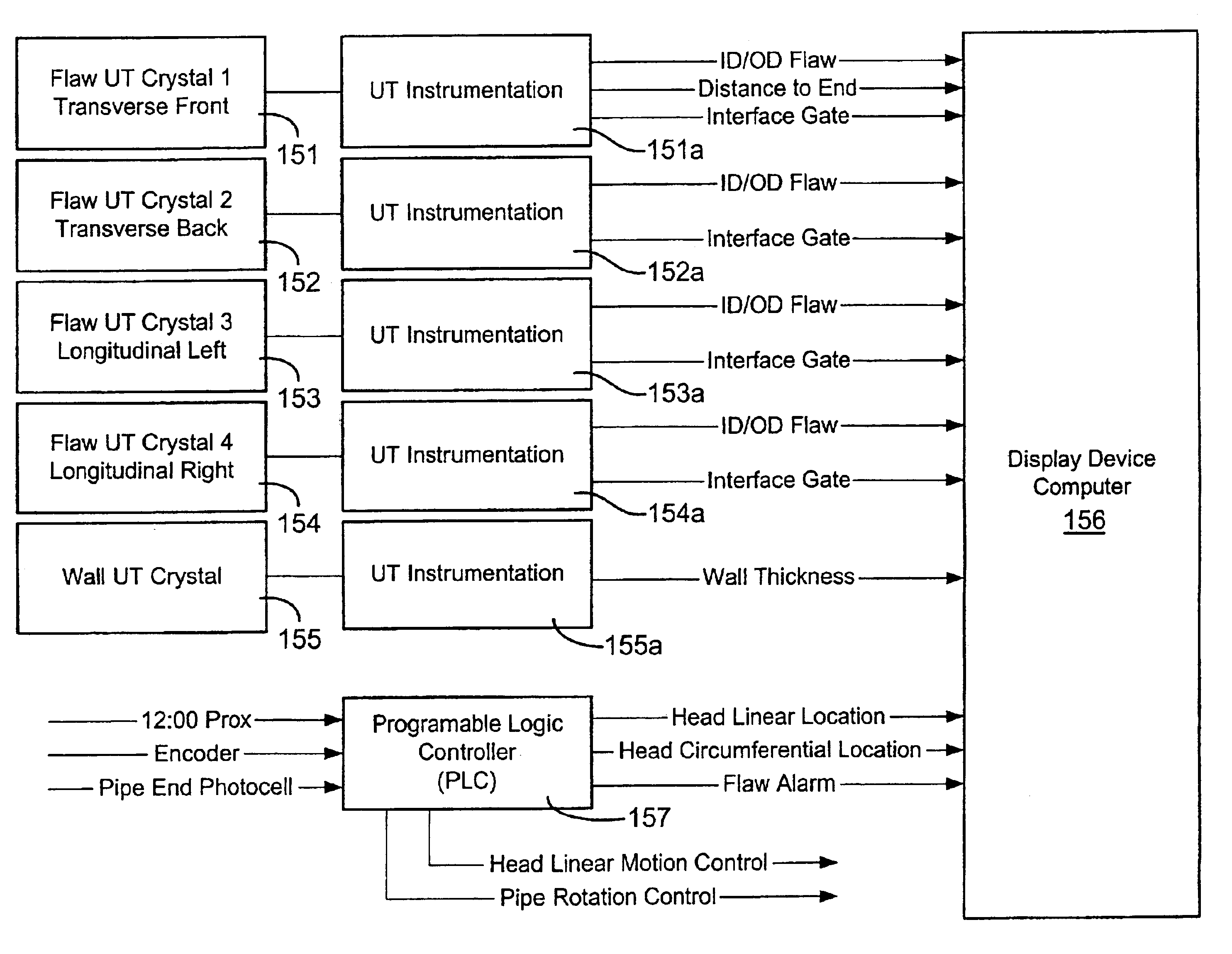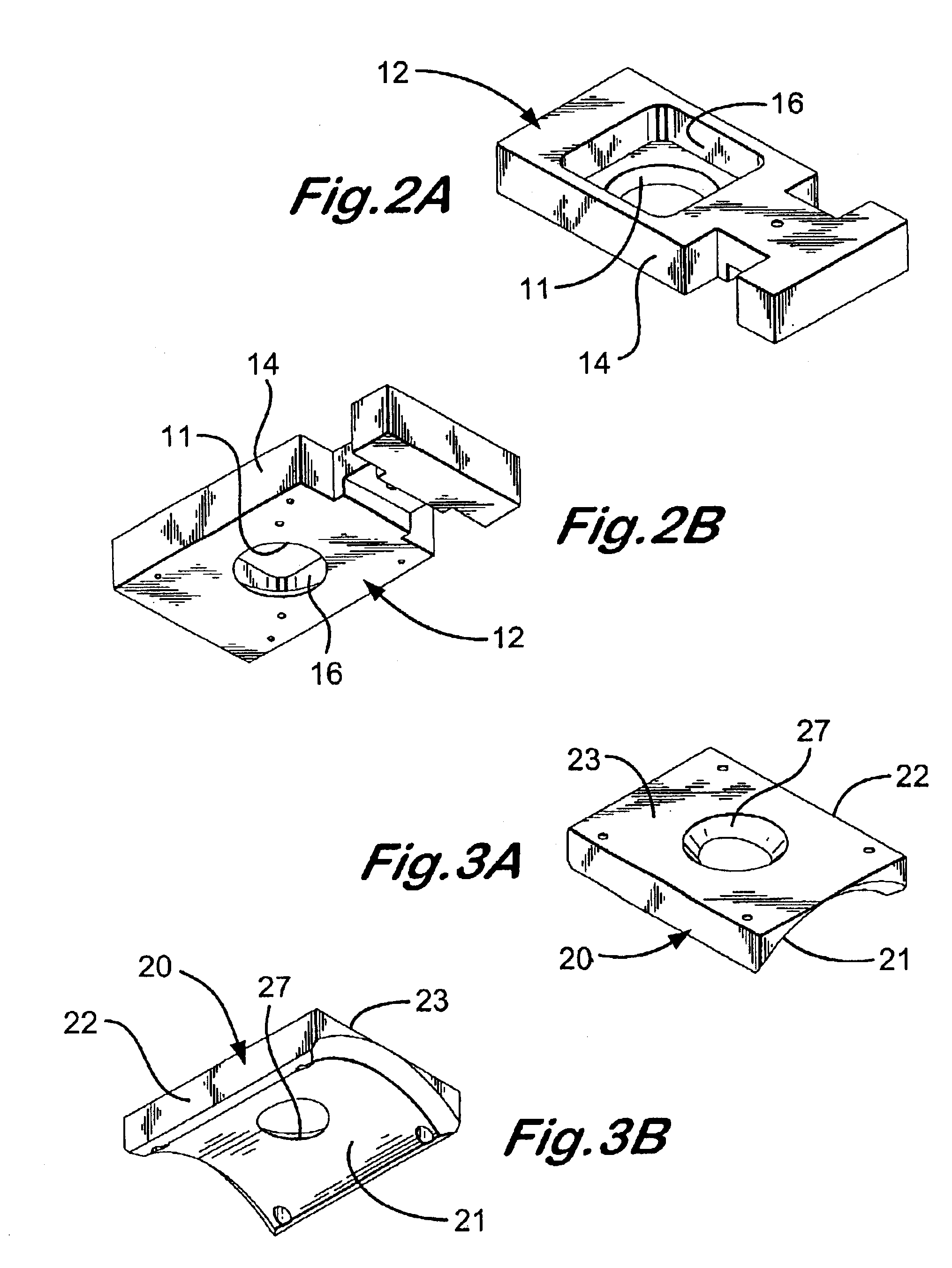Flaw detection in tubular members
a technology of flaw detection and ultrasound, applied in the field of ultrasound systems and methods for detecting flaws in tubular members, can solve the problems of inability to accurately examine a defect, time-consuming and expensive replacement or repair of a defective tubular, and inability to detect the d
- Summary
- Abstract
- Description
- Claims
- Application Information
AI Technical Summary
Benefits of technology
Problems solved by technology
Method used
Image
Examples
Embodiment Construction
FIGS. 1A-1C show a transducer device 10 according to the present invention for use with tubular inspection systems. The device 10 has a base 12; a waveguide support 30; ultrasonic transducers 50a-50d and 52 on the waveguide support 30; and a wearplate 20 secured over one surface of the waveguide member 30.
FIGS. 2A-2E show details of the base 12 of the device 10 of FIG. 1. The base 12 has a body 14 with a recess 16 in which is positioned the waveguide support 30. A bevelled opening 11 receives a correspondingly shaped part of the waveguide support 30 as described below. A roller assembly is secured to the base 12 and has rollers 15 secured to a spacer 19 by bolts 17. These rollers 15 contact the outer surface of a tubular along which the device 10 is moved.
FIGS. 3A and 3B show the wearplate 20 which has a body 22; front face 21; a beveled opening 27 corresponding in size and location to the opening 11 of the base 12 and through which projects part of the waveguide support 30 as discu...
PUM
| Property | Measurement | Unit |
|---|---|---|
| angles | aaaaa | aaaaa |
| angles | aaaaa | aaaaa |
| angles | aaaaa | aaaaa |
Abstract
Description
Claims
Application Information
 Login to View More
Login to View More - R&D
- Intellectual Property
- Life Sciences
- Materials
- Tech Scout
- Unparalleled Data Quality
- Higher Quality Content
- 60% Fewer Hallucinations
Browse by: Latest US Patents, China's latest patents, Technical Efficacy Thesaurus, Application Domain, Technology Topic, Popular Technical Reports.
© 2025 PatSnap. All rights reserved.Legal|Privacy policy|Modern Slavery Act Transparency Statement|Sitemap|About US| Contact US: help@patsnap.com



